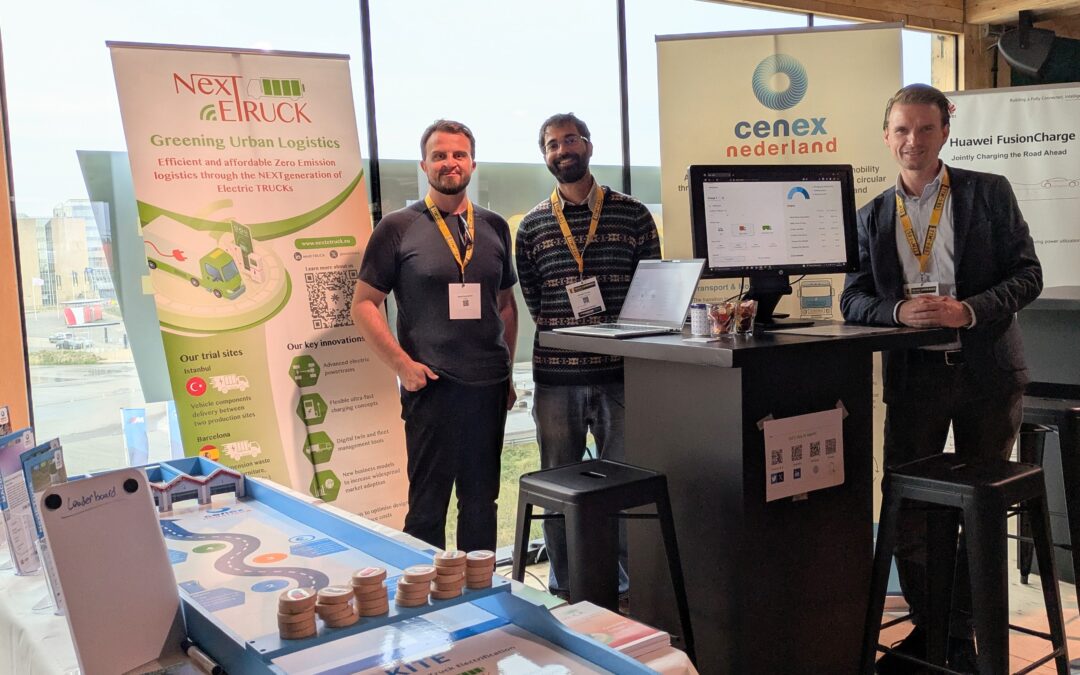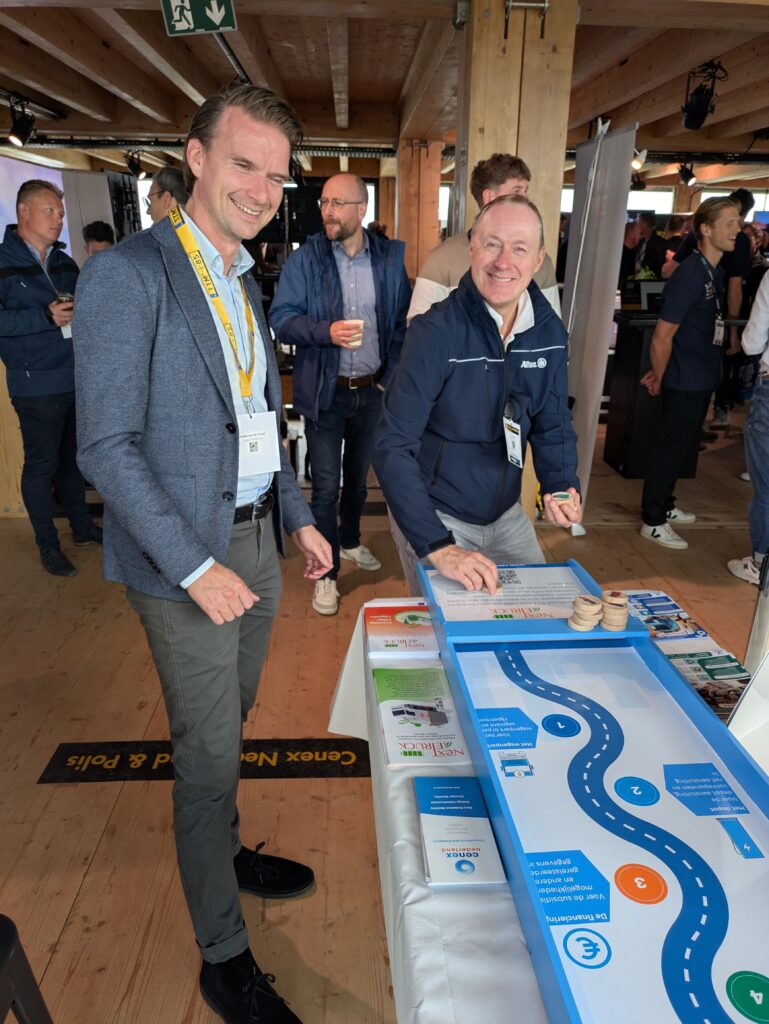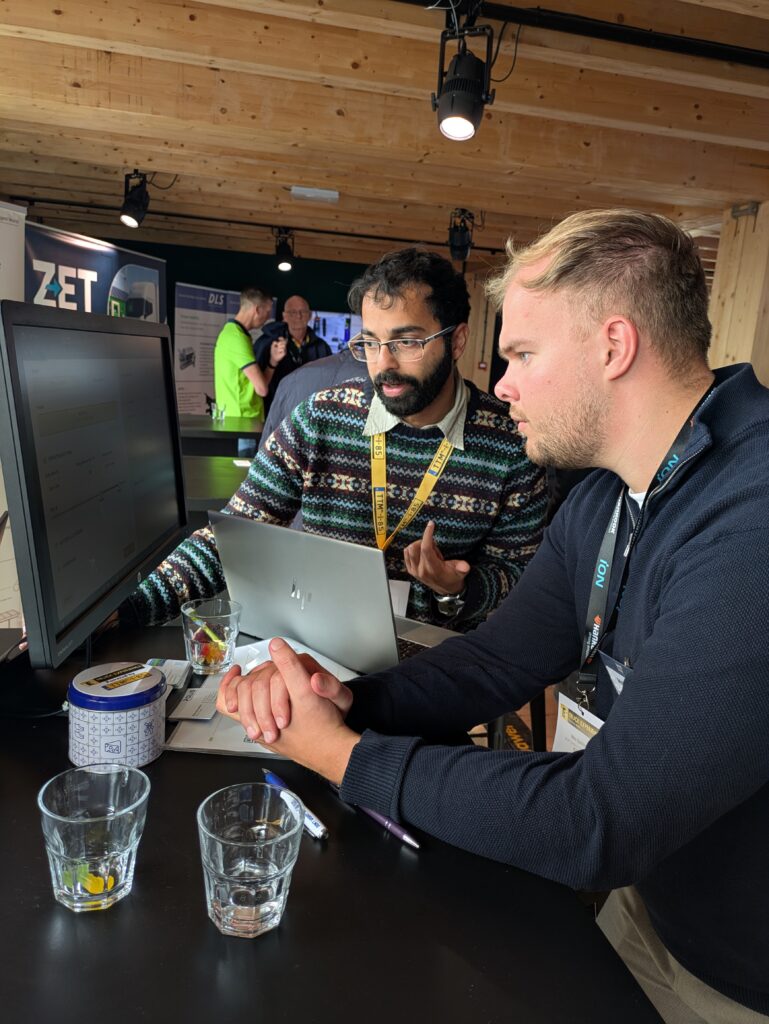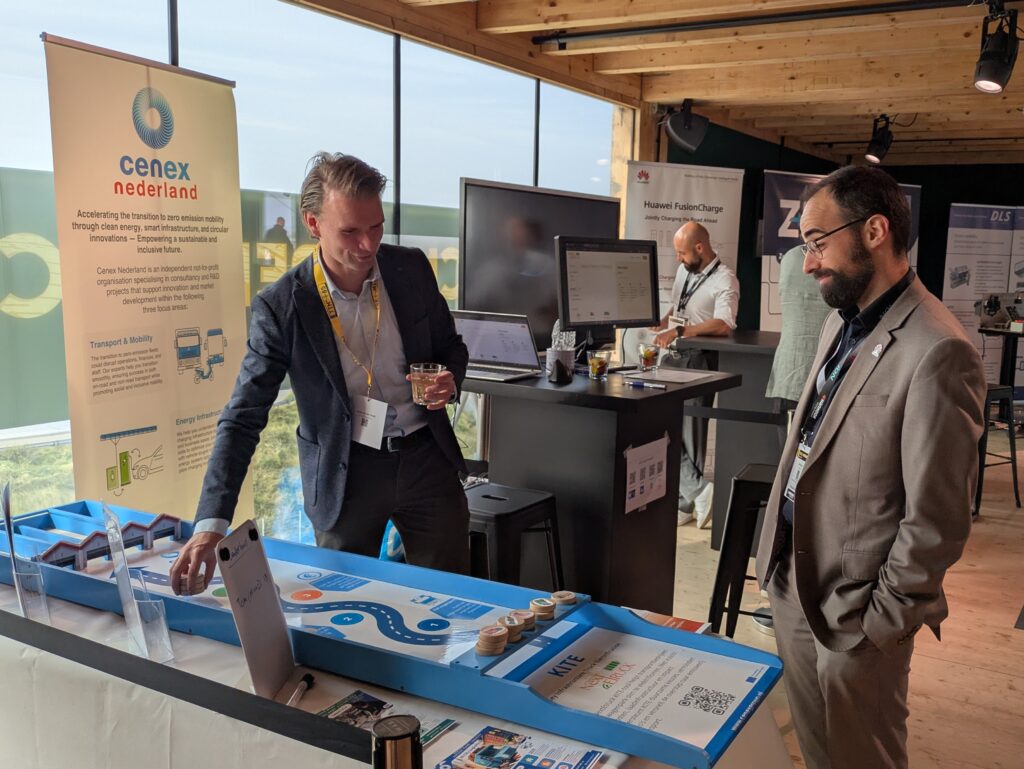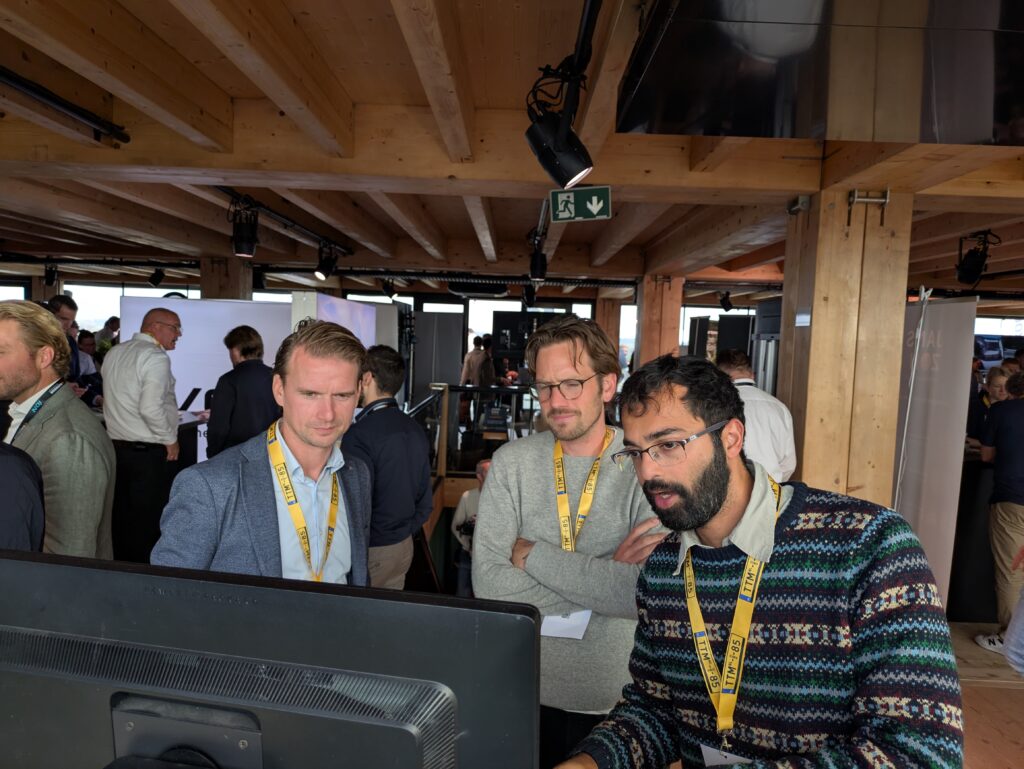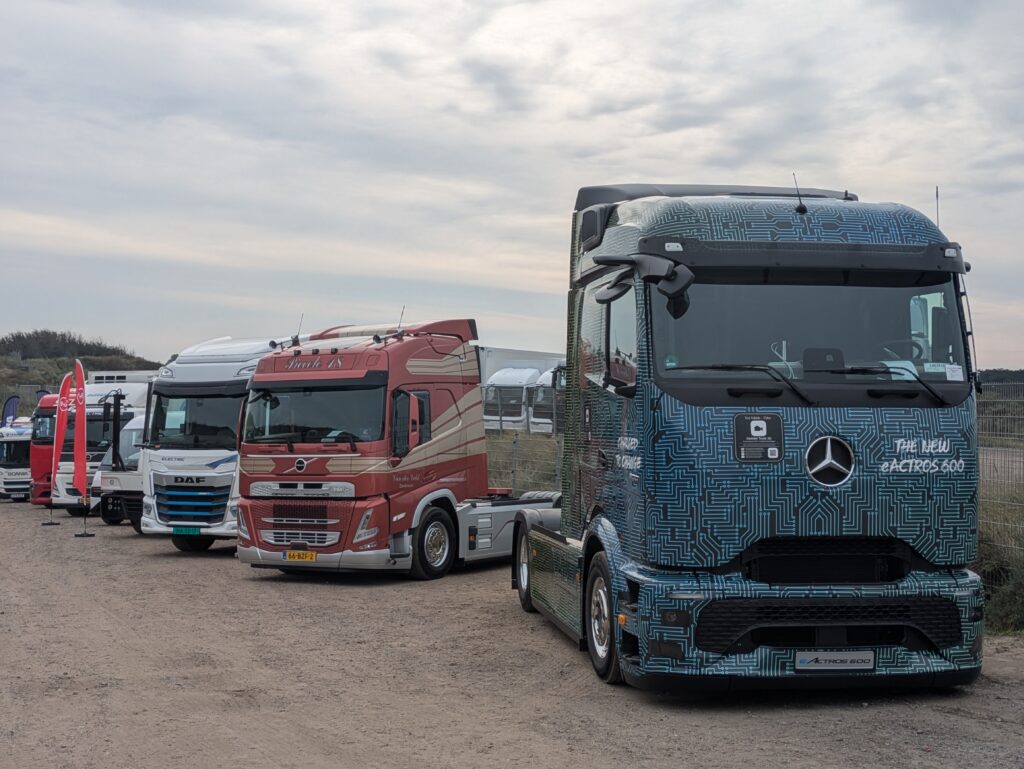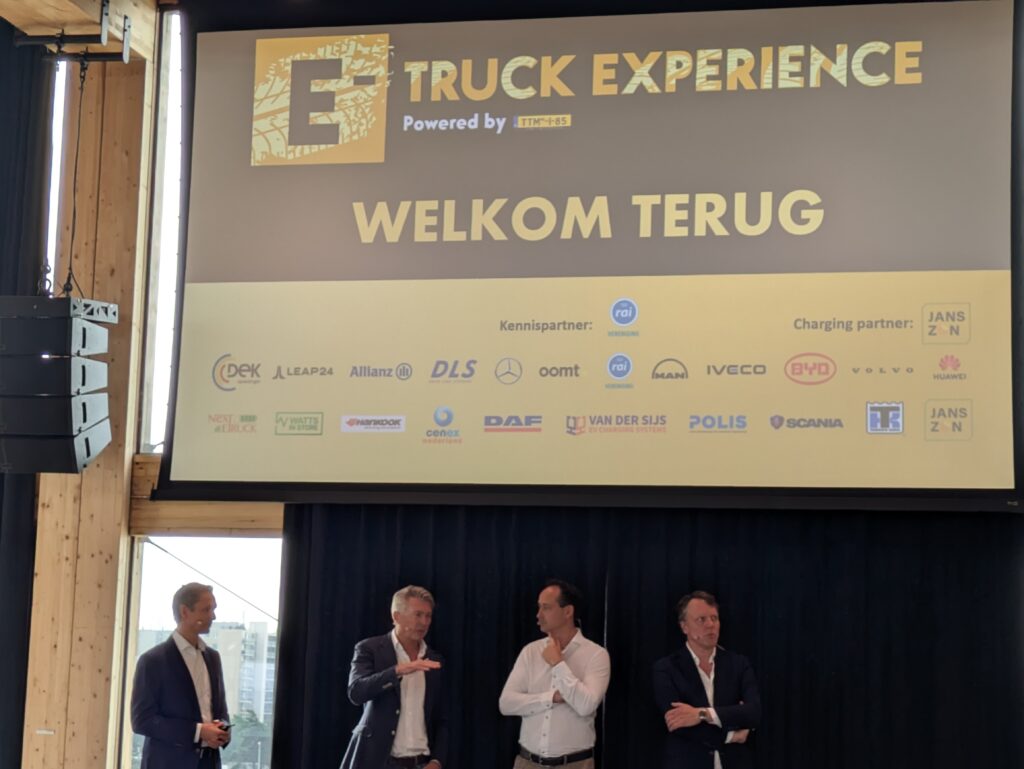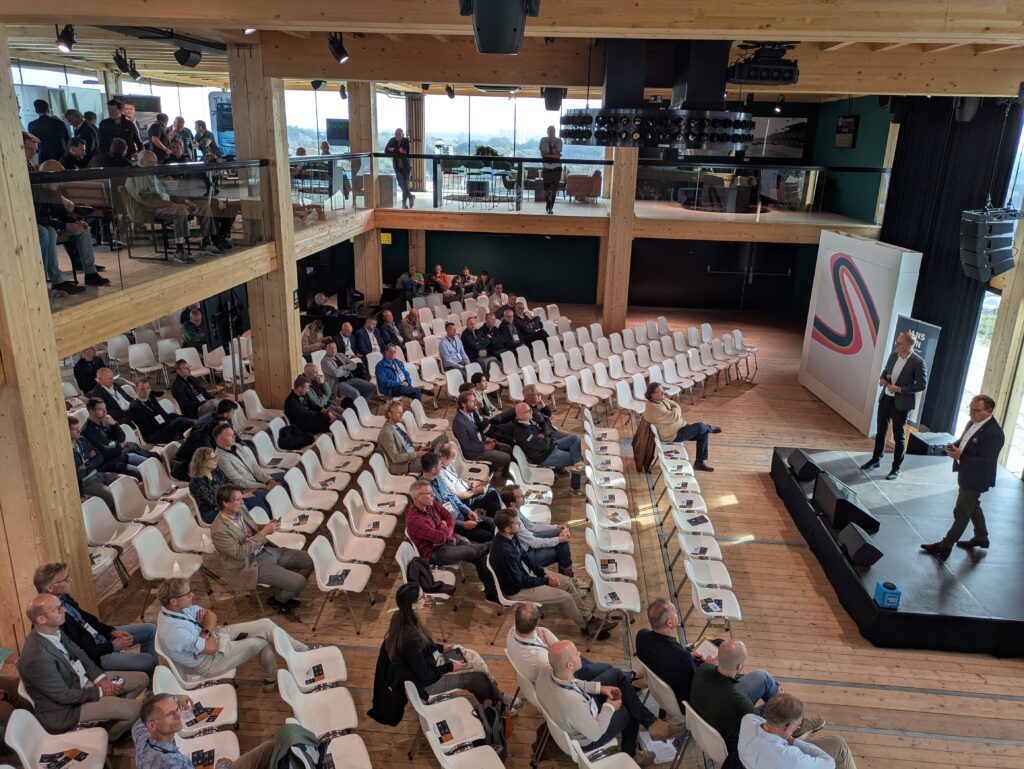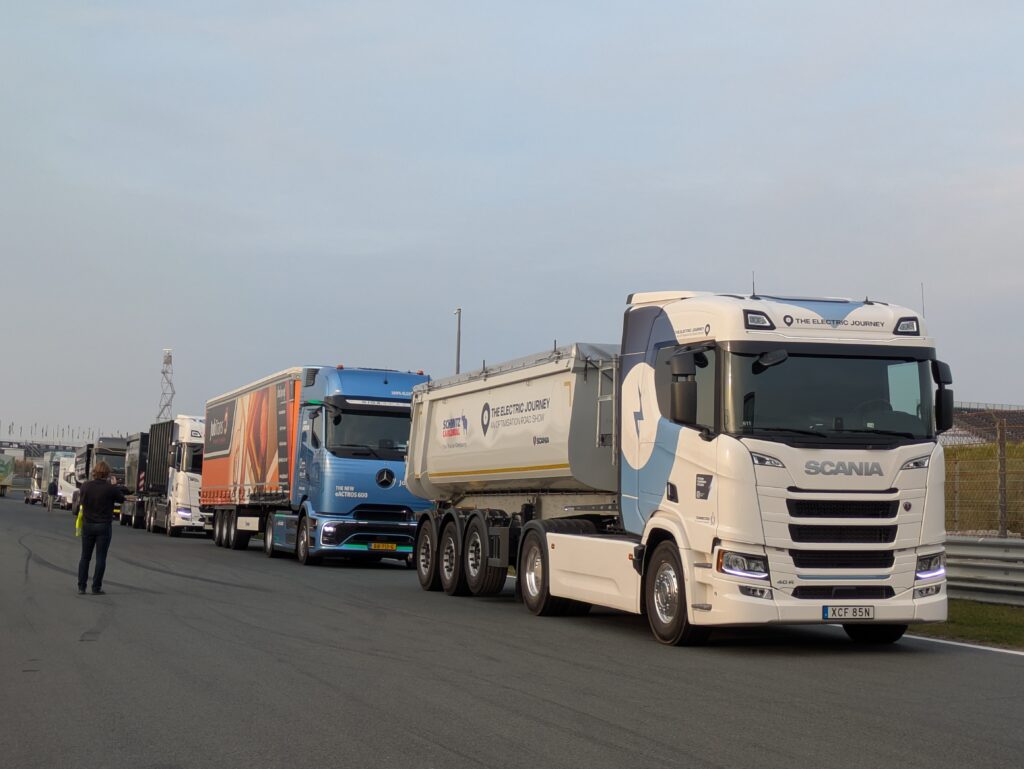This week, NextETRUCK partners CENEX Nederland and POLIS Network attended the E-Truck Experience, held on 2 October 2025 at the Zandvoort Circuit in the Netherlands, to showcase the NextETRUCK KITE tool.
As previously reported, the KITE fleet decarbonisation tool supports fleet managers in helping logistics companies transition to electric trucks. Sharing a stand within the exhibition area provided the opportunity to engage with fleet managers, OEMs, freight companies and other stakeholders from the Netherlands and beyond. The NextETRUCK-themed, handcrafted sjoelbak, a traditional Dutch table shuffleboard game, successfully drew attention to the stand.
What is the E-Truck Experience?
The third edition of the E-Truck Experience showcased the latest electric truck technology, offered test drives, and brought together more than 500 participants from the Netherlands and abroad.
The business-focused event allowed a wide audience of fleet managers, freight companies and other stakeholders to experience the newest models from various OEMs, including DAF, MAN, Mercedes and BYD.
The Circuit of Zandvoort, which also hosts Formula 1 races, provided an excellent setting to test environmentally friendly yet powerful trucks of different sizes, ranging from 18 to over 42 tonnes.
What was presented during the event and at the NextETRUCK stand?
Presentations were tailored to an audience of predominantly Dutch logistics companies, with a focus on investment opportunities and early best practices for freight decarbonisation.
The Dutch HGV toll scheme, scheduled for introduction in July 2026, was also presented. It includes a kilometre-based tax for diesel trucks and aims to incentivise the decarbonisation of road freight. A significant share of the revenue raised will be channelled into subsidies supporting sustainability and innovation in the road transport sector—for example, for the purchase of electric or hydrogen trucks and charging infrastructure.
Several representatives of medium-sized logistics companies raised questions concerning the affordability of electric trucks, potential subsidy schemes, and alternative pricing models that allow comparisons with ICE trucks. Here, the CENEX NL KITE tool proved valuable by addressing these concerns and sharing calculations based on real-world data from freight companies.
POLIS Network also highlighted the importance of medium-sized trucks for deliveries into dense urban centres with freight access regulations—an increasingly common use case in Dutch cities across the Randstad and beyond.

